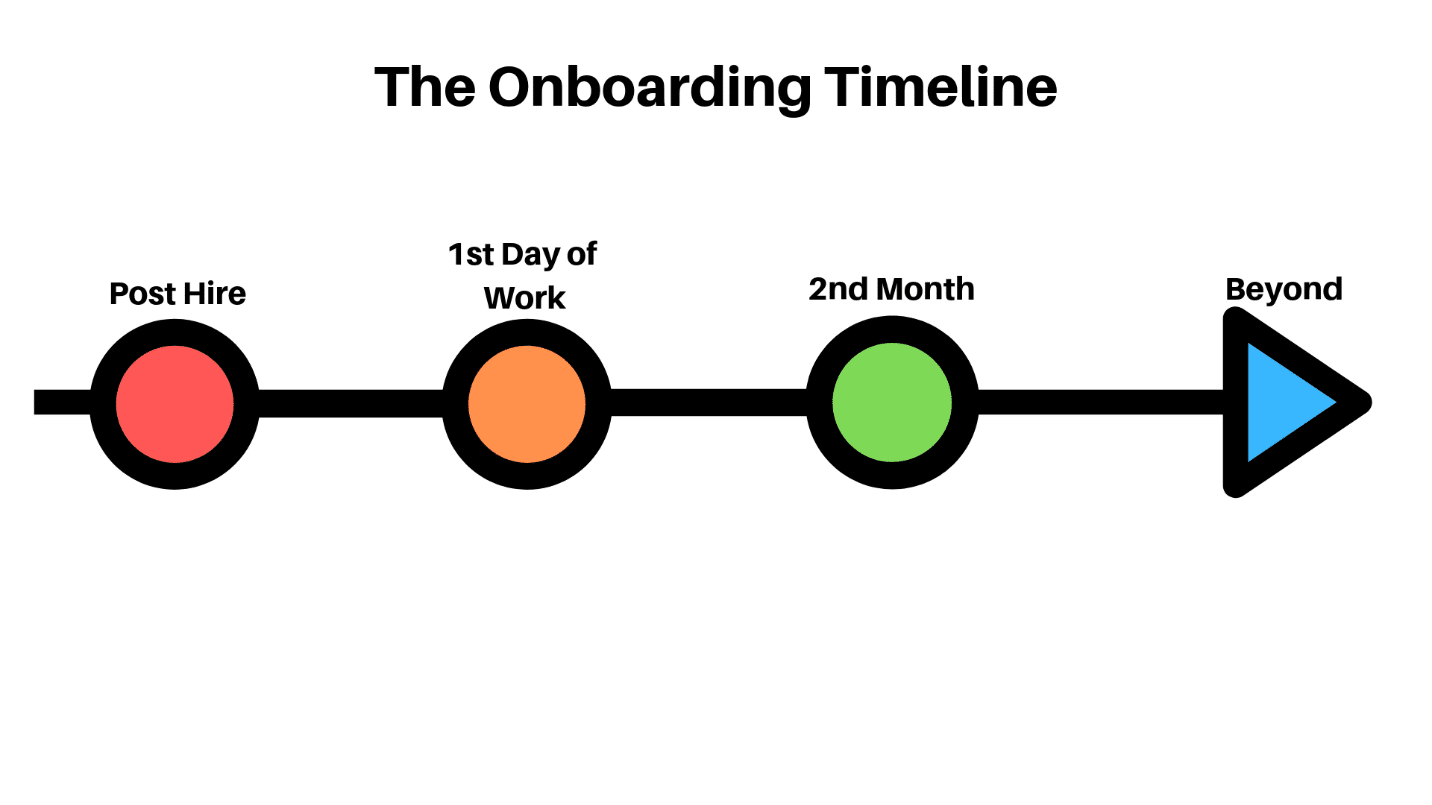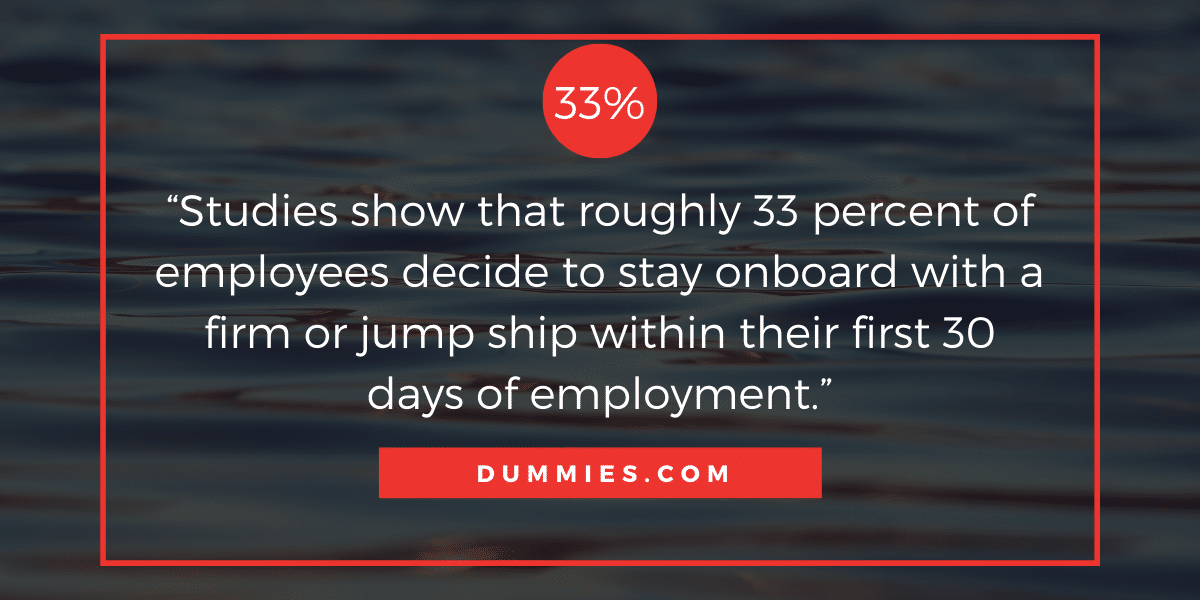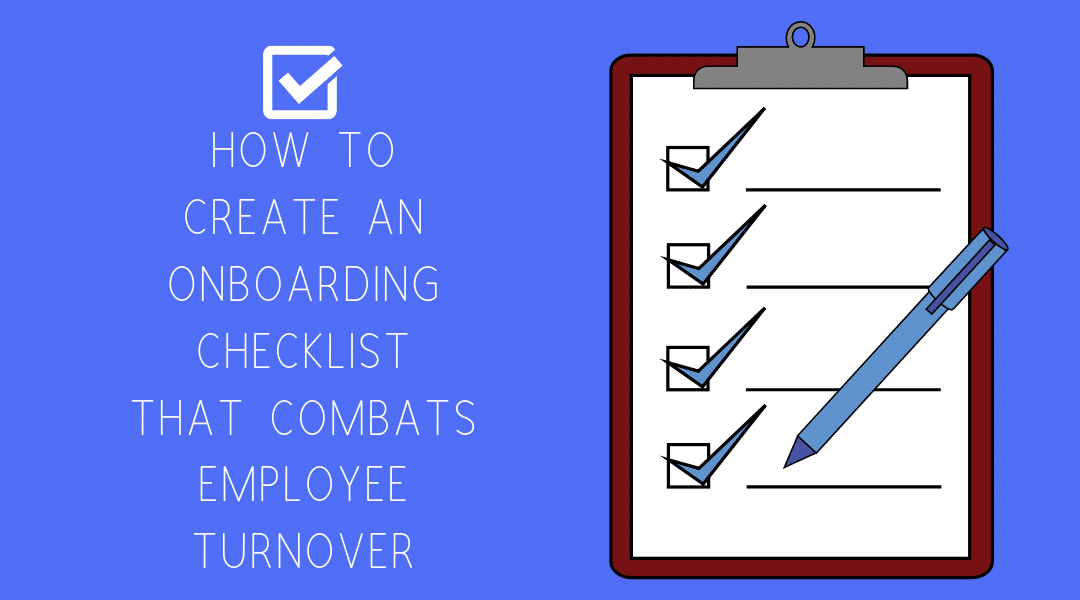The right onboarding checklist will help your employees produce sooner, understand their roles better, and remain with your company for longer.
You know how to write job descriptions, how to interview applicants, and how to pick the best one. However, you struggle when it’s time to train new hires because you’re not sure of the best way to do it. What you need is an onboarding checklist.
Each company is different; each company has its own rules and its own standards. By neglecting to train new hires on these rules and standards, you set them up for failure. An onboarding checklist is crucial to setting up your employees for success. Not only is having an onboarding checklist considerate to your new hires, but it also helps you prevent another issue: employee turnover! Here are some tips to help you craft the best employee onboarding process for your business.
What is the best employee onboarding process?
This may surprise you, but the best trainers agree that onboarding should be ongoing. The recommended length of onboarding is one year. When you invest this amount of time in your employees, they’ll notice the investment, they’ll feel more comfortable in their position, and they’ll be less likely to leave. Here’s what an employee onboarding timeline can look like:

Boost your sales with Blitz’s follow-up technology. Sign up for our free trial now to find out what we’re talking about!
What is included in employee onboarding?
The onboarding process starts as soon as a job candidate becomes a new hire. There is likely a gap of time between when the job candidate accepts the job and when the candidate starts working. We call this the post hire phase. HR should use this phase to plan out the new hire’s onboarding schedule. In addition to HR, managers should be extremely involved in this scheduling process. A coordinated team and well-executed planning are the keys to successful onboarding.
Human Resources:
HR is responsible for creating a smooth transition for new employees as they begin working. Their goal is to deliver the best onboarding experience possible while minimizing the time it takes new hires to become productive. Here are some onboarding ideas HR can do ahead of the employee’s first day:
- Send onboarding materials head of time- links to paperwork, required readings, quizzes, etc.
- Preempt incoming questions with a welcome email- Send an email before their first day that explains what they’ll be expected to do, how they’re expected to dress, and when they’re expected to be at work. You can also tell them how they’ll get paid and when their employee benefits start.
- Make sure a workspace is prepared- prepare ID badges, forms, account ID’s, and passwords
Managers:
Managers are responsible for welcoming new employees, socializing them, and training them. Here are some strategies to incorporate before the employee’s first day:
- Schedule meetings- Schedule meetings to introduce new employees to the key individuals they’ll work with
- Plan a small project- give the new employee a small project to work on
What is an onboarding package?
On the first day of work, an employee should be given an onboarding package. An onboarding package or packet includes all of the training materials, welcome kit, and planned small project instructions.
What should be in an onboarding packet?
An onboarding packet can include training materials such as:
- Instructional reading
- Quizzes
- Games
At Blitz Sales Software, we configure custom onboarding checklists when we’re onboarding new employees. This helps us track how far each new employee is in completing their assigned training materials.
Welcome kit ideas
In addition to having the regular work items prepared for new hires, some organizations even go as far as to provide a welcome kit. Welcome kits can include a handwritten welcome card, a bottle of water, or a small gift card to a local coffee shop. Social platform, Twitter, is reported to give welcome kits that include a t-shirt with a company logo and a branded bottle of wine.
Small project ideas
Once the new employee has received their welcome kit, you can assign them a small project. A small project idea is to have the new employee write a short report on what he or she learned while shadowing another employee.

How long should onboarding last?
Onboarding should last through the first year and beyond. You would think that employee training would be, at most, a couple of months. However, most employee attrition happens in only the first year! According to Dummies.com, “Studies show that roughly 33 percent of employees decide to stay onboard with a firm or jump ship within their first 30 days of employment.” Preventing employee attrition is definitely a good reason to make your employee onboarding checklist longer.
After the first or second month, you should…
- Check-in on new hires
Many HR experts recommend checking in regularly with new employees after the first or second month. A check-in could involve a phone call where you ask how the employee is liking the job. Another check-in idea is to send a survey and include space for the employee to add any additional thoughts or concerns.
- Rate the success of your onboarding checklist
If you checked-in with your new hires, what sort of feedback did they give? Did they have any suggestions? You can use these suggestions to revamp your current onboarding process. A strategy that some organizations find useful for gaining more feedback is to put new employees into discussion groups. These discussion groups consist of employees that started at the organization around the same time. In these groups, employees can share how their transition has been. HR can glean useful feedback from these meetings to make the next onboarding group even more successful.
Track prospects, customers, and employees, customize checklists, and more with Blitz Sales Software. Sign up for a free demo today to learn more!
Beyond
While onboarding doesn’t last forever, training should continue past the first year to keep employees engaged at work. Career capital is the idea that people desire to grow their careers in much the same way as they desire to buy bigger homes and acquire more personal wealth. To invest in employees’ career capital, managers should ask their employees these questions each year:
- What connects them to their career?
- How can they become more knowledgeable or skilled in their position?
- What are their strengths and weaknesses?
- How can we help you grow?
After all, no employee likes to feel stagnant at work. Invest in your employees and you’ll have successful workers that produce sooner, are more engaged with their jobs, and who will stay with your company for longer.


Owing to such circumstances, it becomes necessary to put these new employees at ease. It takes a few gifts with a small welcome note to put them at ease. You can get welcome kit ideas online.